Salado’s 42nd Annual Art Fair
and
‘Best of the Best’ Fine Art
Sale & Reception!
August 2nd & 3rd

Meet Dalhart Windberg at the
‘Best of the Best’ Fine Art Sale & Reception – Tickets $50.00
Salado’s Art Fair

August 2nd & 3rd, 2008
Tickets $5.00
Quick Links
Salado’s 42nd Art Fair to Host
Texas State Artists & Texas Originals August 2nd & 3rd
Organizers of the hottest art show of the year just kicked it up a notch with participation by Texas Commission on the Arts’ Texas Originals artisans and the Texas State Artists. This includes some of the greatest painters, sculptors, musicians, and poet laureates from around the state. Art fans that have been traveling to the banks of Salado Creek for the past 42 years are in for a real treat this year. The quality and variety of artistic expression has never been greater.
The Salado Chamber of Commerce will host over 100 Texas artists and artisans at the 42nd Annual Art Fair August 2nd and 3rd at Pace Park and the new ‘Best of the Best’ Texas Fine Art Sale & Reception at Celebration Center on August 2nd.
“This is a very exciting year for both Art Fair fans and serious art collectors,” stated Larry Prellop, President of the Salado Chamber of Commerce. “Never before has there been such an extraordinary level of artistic talent… from top Texas artists that have rarely, if ever, exhibited together,” added Prellop.
Texas Original artisans working in a wide variety of media including clay, glass, fiber, wood, metal, stone, and more will be exhibiting along with Art Fair favorites at Pace Park on Saturday, August 2nd from 8:00 a.m. to 5:00 p.m. and again on Sunday, August 3rd from 8:00 a.m. to 4: p.m.
Texas State Artists will be honored at the inaugural “Best of the Best” Texas Fine Art Sale & Reception on Saturday evening from 6:00 p.m. to 9:00 p.m. at Celebration Center. This one-evening event offers art enthusiasts a unique opportunity to meet and mingle with some of their favorite Texas artists and poet laureates. Participating artists include: Dalhart Windberg, Roy Lee Ward, George Boutwell, Lee Herring, Ed Hayes, Kathy Vargas, Ralph White, David Keens, Jack Terry, B. Herd, Raul Gutierrez, Alan Birkelbach, and the 2008 Texas State Musician of the Year, Shelley King.
“The Texas Originals and Texas State Artists are two programs that we are very proud of, “stated Gaye Greever McElwain, Director of Marketing and Development for the Texas Commission on the Arts. “These artists represent the depth of the state’s artistic talent and its rich cultural diversity,” added McElwain. “Many of these artists began their careers at the Salado Art Fair,” noted McElwain. “I can’t imagine a better venue to showcase these two state programs,” concluded McElwain.
For ticket information, contact the Salado Chamber of Commerce at 254-947-5040 or visit them online at www.salado.com.
About Salado Art Fair:
Salado Art Fair, held the first weekend in August, is one of the oldest open-air art exhibits in the state of Texas. For the past forty-two years, thousands of artists and artisans have traveled to the banks of Salado Creek to showcase their work. Over the years, many nationally recognized Texas artists have participated in the event, including George Boutwell, B. Herd, and Ron Wells. The Salado Art Fair is a Salado Chamber of Commerce event that brings over 5,000 arts enthusiasts and visitors to the community each year. For more information about the Salado Art Fair and other Chamber events call 254-947-5040 or visit them online at www.salado.com.
About the Texas Commission on the Arts
TCA was organized in 1965 by the Texas Legislature to develop a receptive climate for the arts in Texas. TCA supports a diverse and innovative arts community in Texas, throughout the nation and internationally by providing resources to enhance economic development, arts education, cultural tourism and quality of life.
For more information on TCA and its programs, please visit www.arts.state.tx.us.
About Texas State Artists
Every two years, the Texas Legislature honors talented Texans for their years of excellence and dedicated commitment to the arts by designating them as Texas State Artists. Texas State Artists are native Texans or five-year residents of the state that have received recognition for high levels of excellence and success in their respective disciplines and are named as Texas State Poet Laureate, Musician or Visual Artist. Texas State Artists serve one-year appointments and demonstrate the essence of what art in Texas is all about. Previous winners include James Dick, Lee Herring, Ray Benson, Damian Priour, Red Steagall, Sharon Kopriva, and George Boutwell, just to name a few.
The Texas Commission on the Arts (TCA) oversees the Texas State Artist program. The next call for Texas State Artist nominations will take place in the fall of 2008. More information, including a complete list of past Texas State Artists, is available online at www.arts.state.tx.us.
About Texas Original
Texas Original (TxO) was created by the Texas Commission on the Arts (TCA) to help preserve Texas’ unique arts and crafts heritage and was designed to achieve three primary goals:
- promote original work by Texas’ craft artists;
- provide a method for buying/selling original Texas artwork and crafts;
- preserve traditional methods for creating hand-crafted work to ensure those methods are passed on to future generations.
Texas is home to an extraordinary number of talented craft artisans working in a wide variety of media including clay, glass, fiber, wood, metal, stone, and more. Artists included in the Texas Original program have been through a review process overseen by the Texas Commission on the Arts. Only artisans and crafts people who meet the highest business, quality and artistic standards are granted the title of Texas Original. When you see the TxO brand, you know you are looking at a high-quality, authentic, original work by a Texas artist.
For more information on the Texas Original program, please visit www.txoriginal.com.
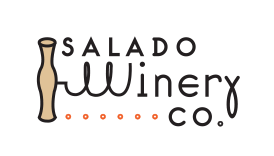
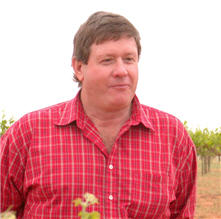 Neal Newsom heads Newsom Vineyards and the Texas Wine and Grape Growers Association.
Neal Newsom heads Newsom Vineyards and the Texas Wine and Grape Growers Association.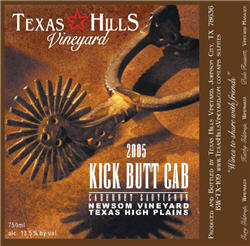 NN: The next year we planted two more acres and we would just keep planting a couple of acres each year. When we got up to 18 acres, we had to stop because we were running up against a wall trying
NN: The next year we planted two more acres and we would just keep planting a couple of acres each year. When we got up to 18 acres, we had to stop because we were running up against a wall trying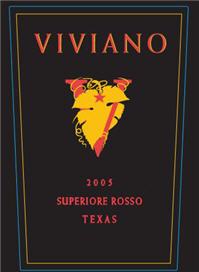 NN: OK. Here’s a few off the top of my head.
NN: OK. Here’s a few off the top of my head. 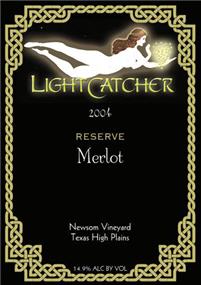 doing well, too. Dolcetto is a dry wine, but the High Plains version has the sweetest fruit. In the whites, Viognier, Pinot Grigio and Vermentino are working real well. I’m also hearing that Marsanne and Roussanne are doing well, but I haven’t tried any yet.
doing well, too. Dolcetto is a dry wine, but the High Plains version has the sweetest fruit. In the whites, Viognier, Pinot Grigio and Vermentino are working real well. I’m also hearing that Marsanne and Roussanne are doing well, but I haven’t tried any yet.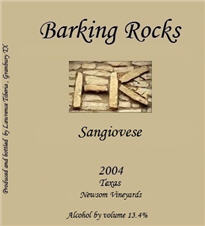 business. I refuse to use illegal immigrants, but if the program isn’t friendly, that’s all that will be available, and for me, since I won’t use illegals, then me and a lot of other farmers will be in trouble.
business. I refuse to use illegal immigrants, but if the program isn’t friendly, that’s all that will be available, and for me, since I won’t use illegals, then me and a lot of other farmers will be in trouble.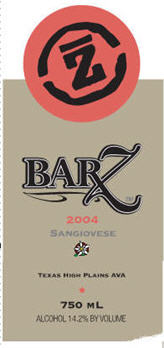
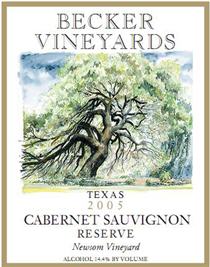 Gary Gilstrap was a pharmacist and he is an activist winemaker, comfortable with micro-oxygenation, barrel alternatives and anything else he needs to use to make the best wine he can. His 2005 Texas Hills Kick Butt Cab has tongue tickling acidity with sarsaparilla and cola on the nose. His version has very soft tannins and is ready to drink right now. Many consumers would pick Becker Vineyards as the best winery in the state, and while there are several other wineries that could just as easily take that title, there’s no arguing with the consistent excellence of winemaker Russell Smith’s skill. The Becker Cab Reserve has gorgeous color, big fruit that’s perfect balanced with the acids and a long finish of sweet fruit and leather. The wine has the elegance of Bordeaux with a dollop of California fruitiness. If it said Napa on the label it would cost $125. Another winery frequently mentioned at or near the top is Llano Estacado. Winemaker Greg Bruni spent his youth in California making wine all over the state. He has been at Llano for 15 years, learning the specifics of working with Texas fruit. A few years ago, he decided to create a tête de cuvée. It’s called Viviano and it is consistently one of the best red wines in Texas. Greg’s tastes run more to the Old World than the New, and he’s aiming at a super Tuscan style, blending Newsom’s Cabernet and Sangiovese. The 2005 is a gorgeous deep color with plum and red berry aromas and plenty of grip. It’s still a baby. This ideal wine for a grilled steak.
Gary Gilstrap was a pharmacist and he is an activist winemaker, comfortable with micro-oxygenation, barrel alternatives and anything else he needs to use to make the best wine he can. His 2005 Texas Hills Kick Butt Cab has tongue tickling acidity with sarsaparilla and cola on the nose. His version has very soft tannins and is ready to drink right now. Many consumers would pick Becker Vineyards as the best winery in the state, and while there are several other wineries that could just as easily take that title, there’s no arguing with the consistent excellence of winemaker Russell Smith’s skill. The Becker Cab Reserve has gorgeous color, big fruit that’s perfect balanced with the acids and a long finish of sweet fruit and leather. The wine has the elegance of Bordeaux with a dollop of California fruitiness. If it said Napa on the label it would cost $125. Another winery frequently mentioned at or near the top is Llano Estacado. Winemaker Greg Bruni spent his youth in California making wine all over the state. He has been at Llano for 15 years, learning the specifics of working with Texas fruit. A few years ago, he decided to create a tête de cuvée. It’s called Viviano and it is consistently one of the best red wines in Texas. Greg’s tastes run more to the Old World than the New, and he’s aiming at a super Tuscan style, blending Newsom’s Cabernet and Sangiovese. The 2005 is a gorgeous deep color with plum and red berry aromas and plenty of grip. It’s still a baby. This ideal wine for a grilled steak.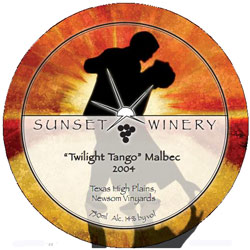 heat you might expect. The nose has a lovely perfume with just a touch of cola, caramel and black pepper. The mouthfeel is velvety but has good grip, sweet fruits and a l-o-n-g finish. I couldn’t detect the alcohol at all.
heat you might expect. The nose has a lovely perfume with just a touch of cola, caramel and black pepper. The mouthfeel is velvety but has good grip, sweet fruits and a l-o-n-g finish. I couldn’t detect the alcohol at all.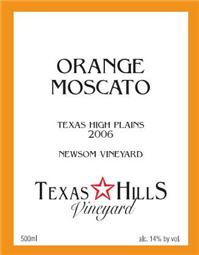 tos by Wes Marshall
tos by Wes Marshall READER FEEDBACK: To post your comments on this story,
READER FEEDBACK: To post your comments on this story, 



